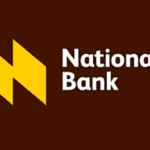Last Updated on March 28, 2025 by admin
The United States (USA) consists of 50 states and has one of the world’s wealthiest and most diversified economies, led by a highly productive services sector, advanced manufacturing, and world-class research and development.
The origin and revolution of United States of America is trace back to British Crown.In 1787 the country constitution was drafted and give birth to federal system of Government a division of powers that has stayed unaltered in structure since its origin
The capital city of United States of America is Washington, DC with estimated 316 million population, the world’s foremost economic and military power, with worldwide interests and an unparalleled global reach.
The nation GDP represents near a fourth of the world total, and its military financial plan is figured to be nearly however much the remainder of the world’s defense spending put together
The system of government consists of three branches: executive, legislative, and judicial, the executive branch of united states is headed by president and a state governor who is directly elected by the people
The capital city with the fewest people is Montpelier, Vermont while the capital city with the most people is Phoenix, Arizona. It has about 3.8 million square miles (9.8 million square kilometers) which the country the third most populous country in the world after China and India
Also read: List of Universities in Canada that offer Cheapest Tuition Fees for International Students
In our today discussion, we are going to take a look at United states of america states and capital city and their abbreviation
| State | Capital | Abbreviation |
|---|---|---|
| Alabama | Montgomery | AL |
| Alaska | Juneau | AK |
| Arizona | Phoenix | AZ |
| Arkansas | Little Rock | AR |
| California | Sacramento | CA |
| Colorado | Denver | CO |
| Connecticut | Hartford | CT |
| Delaware | Dover | DE |
| Florida | Tallahassee | FL |
| Georgia | Atlanta | GA |
| Hawaii | Honolulu | HI |
| Idaho | Boise | ID |
| Illinois | Springfield | IL |
| Indiana | Indianapolis | IN |
| Iowa | Des Moines | IA |
| Kansas | Topeka | KS |
| Kentucky | Frankfort | KY |
| Louisiana | Baton Rouge | LA |
| Maine | Augusta | ME |
| Maryland | Annapolis | MD |
| Massachusetts | Boston | MA |
| Michigan | Lansing | MI |
| Minnesota | St. Paul | MN |
| Mississippi | Jackson | MS |
| Missouri | Jefferson City | MO |
| Montana | Helena | MT |
| Nebraska | Lincoln | NE |
| Nevada | Carson City | NV |
| New Hampshire | Concord | NH |
| New Jersey | Trenton | NJ |
| New Mexico | Santa Fe | NM |
| New York | Albany | NY |
| North Carolina | Raleigh | NC |
| North Dakota | Bismarck | ND |
| Ohio | Columbus | OH |
| Oklahoma | Oklahoma City | OK |
| Oregon | Salem | OR |
| Pennsylvania | Harrisburg | PA |
| Rhode Island | Providence | RI |
| South Carolina | Columbia | SC |
| South Dakota | Pierre | SD |
| Tennessee | Nashville | TN |
| Texas | Austin | TX |
| Utah | Salt Lake City | UT |
| Vermont | Montpelier | VT |
| Virginia | Richmond | VA |
| Washington | Olympia | WA |
| West Virginia | Charleston | WV |
| Wisconsin | Madison | WI |
| Wyoming | Cheyenne | WY |
The Role of Capitals in united states Governance
Capitals in the United States play a pivotal role in governance at both the federal and state levels. They are not merely geographic locations but are symbols and operational hubs where government functions, decision-making processes, and political activities converge. Here’s an in-depth look at how capitals shape U.S. governance:
State capitals are integral to the governance of the United States, serving as the administrative and political centers for each state. These cities house the state government, including the governor’s office, state legislature, and various state agencies, facilitating efficient governance by bringing together key decision-makers, lawmakers, and administrative staff in one location.
State capitals provide a centralized hub for the development, debate, and implementation of state policies and laws, as well as the coordination of essential public services. They also serve as symbols of state identity and heritage, often containing historical landmarks and cultural institutions that reflect the state’s history and values
Federal Capital: Washington, D.C.
Washington, D.C., the capital of the United States, is a city rich in history and culture. It is home to numerous iconic landmarks that attract millions of visitors each year. Among these are the Washington Monument, a 555-foot marble obelisk honoring the first U.S. president, and the Lincoln Memorial, featuring a 19-foot statue of Abraham Lincoln.
The Jefferson Memorial, a neoclassical structure dedicated to the third president, is another significant site. These landmarks collectively represent key figures and events in American history, making Washington, D.C. a living museum of the nation’s heritage
.
Political Role:
- Seat of Government: Washington, D.C. is the seat of the federal government, housing the President, Congress, and the Supreme Court.
- Legislative Functions: Congress meets in the Capitol Building to draft and pass federal laws.
- Executive Functions: The President resides in the White House and executes federal laws.
Administrative Role:
- Many federal agencies and departments are headquartered in D.C., overseeing various aspects of national policy and administration.
- The city hosts national institutions like museums, libraries, and cultural centers.
Cultural and Symbolic Role:
- D.C. symbolizes the actions of the national government. Phrases like “Washington raised taxes” reflect this symbolism.
- The city hosts national ceremonies, commemorations, and public protests, promoting national pride.
Economic Role:
- The city provides high-quality jobs in both the public and private sectors.
- D.C. attracts tourists to its historical landmarks, museums, and monuments.
Challenges:
- Balancing the national capital role with local governance can be challenging.
- Hosting federal properties and foreign embassies can lead to financial burdens.
The United States has a complex and well-defined political structure, designed with a system of checks and balances to prevent any one part of the government from becoming too powerful. Here’s a breakdown of the key elements:
8. Checks and Balances:
- This system ensures that no single branch of government becomes too powerful.
- Each branch has some power to limit or influence the actions of the other two branches.
- Examples:
- Congress can impeach and remove the President or federal judges.
- The President can veto legislation passed by Congress.
- The Supreme Court can declare laws passed by Congress or actions by the President unconstitutional.
4. Political Parties:
- The U.S. has a two-party system, with the Democratic and Republican parties dominating politics.
- Each party has a broad range of ideologies and members.
- Third parties exist but have limited influence.
5. Elections:
- Elections are held at the federal, state, and local levels.
- Presidential elections are held every four years.
- Congressional elections are held every two years.
- Voting is a fundamental right for citizens aged 18 and older.
















